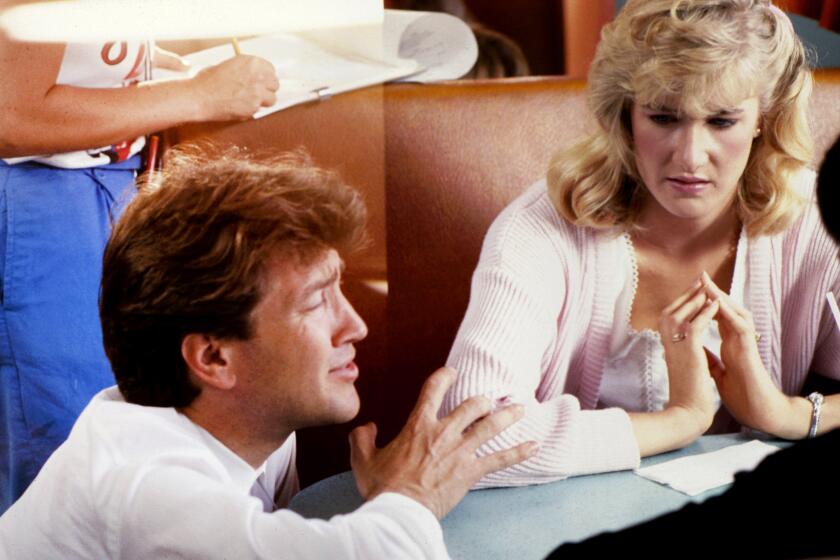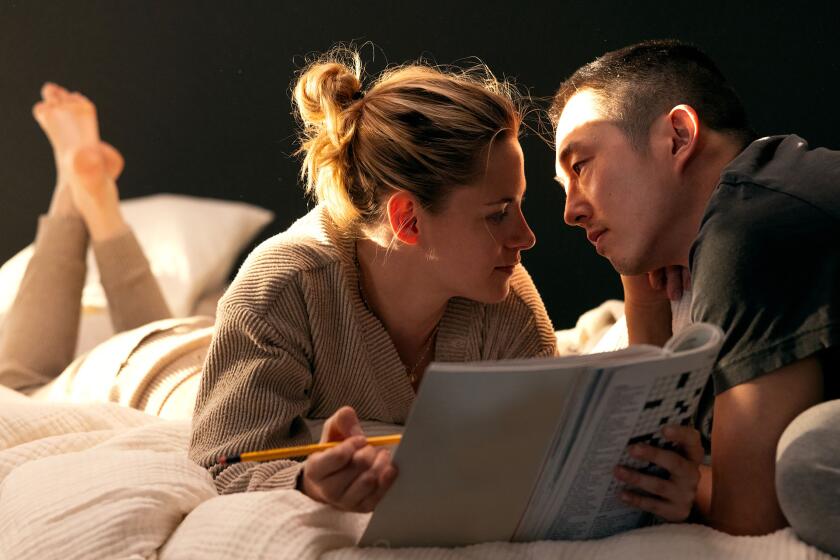A Brazilian Family’s Long-Running Vendetta Fuels ‘Behind the Sun’
- Share via
The Oscar-winning “Central Station’s” director Walter Salles, producer Arthur Cohn and cinematographer Walter Carvalho have re-teamed for “Behind the Sun,” another beautiful and harrowing film set in Brazil. “Central Station” is a warmer and more inviting film, but the austere “Behind the Sun” is ultimately a rewarding parable on the futility of revenge and the redemptive power of self-sacrificing love.
“Behind the Sun” was adapted by Salles and his co-writers Sergio Machado and Karim Ainouz from Ismail Kadare’s acclaimed novel “Broken April,” which is set in Albania. With Kadare’s blessing, Salles transposed the novel to a remote region of Brazil “somewhere behind the sun” in 1910.
For the record:
12:00 a.m. Dec. 13, 2001 FOR THE RECORD
Los Angeles Times Thursday December 13, 2001 Home Edition Part A Part A Page 2 A2 Desk 1 inches; 29 words Type of Material: Correction
Oscar nominee--A review of the film “Behind the Sun” in Wednesday’s Calendar incorrectly referred to the movie “Central Station” as having won an Academy Award. It was nominated for an Oscar but didn’t win.
The film unfolds from the point of view of Pacu (Ravi Ramos Lacerda), a boy of around 10. He is the youngest of three sons in a sugar cane-raising family that has fallen on hard times since the abolishment of slavery. Life for the brothers and their parents (Jose Dumont, Rita Assemany) is a grueling cycle of planting, cutting and processing their cane. The father is sustained by a fierce pride in family and is a severe parent, not unlike the warden of a prison where hard labor and strict obedience are the orders of the day.
Early on, during a rare break in the daily routine, Pacu is happily riding on the shoulders of his oldest brother Inacio in the middle of an open field when suddenly Inacio is shot to death. It is then that we discover that this region of Brazil is in the clutch of a vendetta tradition much like in Sicily. We don’t immediately know why this family, the Breves, are caught up in a deadly chain of revenge with the neighboring Ferreira clan, but it is easy to guess that it is over land and has been going on for generations.
It falls upon the middle brother Tonho (Rodrigo Santoro) to uphold the family honor and gun down his Ferreira counterpart, which in turn makes him a marked man. This brings the Breves family to the verge of extinction, whereas the Ferreiras are not only more numerous but more prosperous as cattle ranchers. The most significant moment in the film occurs when the Breves father and his oldest surviving son take their blocks of sugar to town but receive less than usual. The proprietor of the local store explains that their competitors now have steam-driven processing equipment, which enables them to produce the sugar at greater volume more rapidly and cheaply.
The mention of this machinery is the film’s first and sole connection with a time that is within the memory of people still alive today. Rodrigo understands that it means that the modern world is threatening their way of life. He in turn connects it with the exceptionally bright Pacu’s admonition not to gun down a Ferreira. Even their mother dares to observe ruefully that “in this house the dead command the living.”
As it happens, the father’s iron rule of death before dishonor is weakening just as a pair of itinerant performers, a beautiful young fire-eater, Clara (Flavia Marco Antonio), and her wise, hearty stepfather, Salustiano (Luiz Carlos Vasconcelos), pass through the countryside. They inadvertently will have a transforming, destiny-altering effect on the Breves brothers and the fate of their family.
Carvalho’s superb cinematography, Antonio Pinto’s score and a dedicated cast and crew admirably sustain this poetic and uncompromising film. Although “Behind the Sun” will bring worldwide attention to the handsome Santoro, already a star of Brazilian TV, and the exquisite Antonio, an actual circus performer now studying acting at the University of Bahia, it is little Ravi Ramos Lacerda who carries the show. His Pacu is in the perilous Hollywood tradition of the awesomely precocious--and often annoying--child. Yet Ramos Lacerda has such an appealing naturalness that under Salles’ astute direction he transcends this potential pitfall to enable this most challenging film to succeed.
MPAA rating: PG-13, for some violence and a scene of sexuality. Times guidelines: The film’s sexuality is brief and discreet, the violence brief but shocking, and the film’s themes are mature.
‘Behind the Sun (Abril Despedacado)’
Ravi Ramos Lacerda ...Pacu
Rodrigo Santoro ...Tonho
Jose Dumont ...Father
Flavia Marco Antonio ...Clara
Rita Assemany ...Mother
A Miramax presentation. Director Walter Salles. Producer Arthur Cohn. Executive producers Mauricio Andrade Ramos, Lillian Birnbaum. Screenplay Walter Salles, Sergio Machado, Karim Ainouz; inspired by the novel “Broken April” by Ismail Kadare. Cinematographer Walter Carvalho. Editor Isabelle Rathery. Music Antonio Pinto, with the participation of Ed Cortes. Costumes Cho Albuquerque. Art director Cassio Amarante. In Portuguese, with English subtitles. Running time: 1 hour, 33 minutes.
Exclusively at the Royal, 11523 Santa Monica Blvd., West L.A., (310) 477-5581.
More to Read
Only good movies
Get the Indie Focus newsletter, Mark Olsen's weekly guide to the world of cinema.
You may occasionally receive promotional content from the Los Angeles Times.










